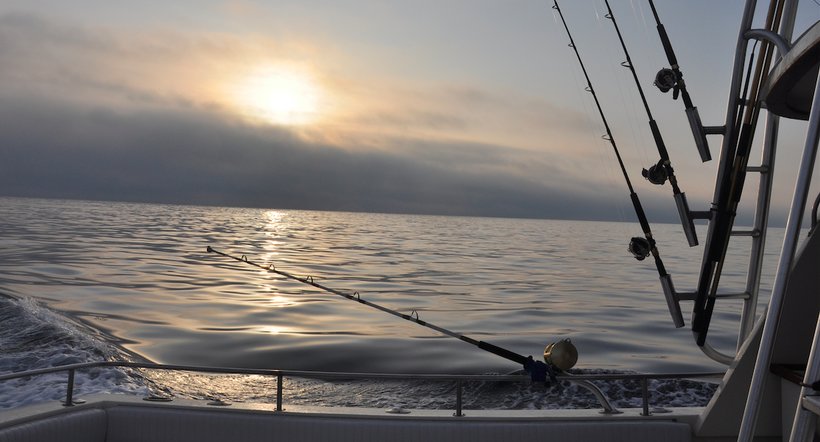
WASHINGTON, D.C. — The National Oceanic and Atmospheric Administration (NOAA) will announce later today that Alabama recreational fisherman will be limited to a short 9-day Red Snapper season. The Season for fisherman working on a charter-for-hire basis will be only 46 days.
Red Snapper angling dates as enforced by NOAA are as follows:
• Private angling component: Nine days; June 1 – June 10, 2016, at 12:01am local time.
• Federally-permitted for-hire component: 46 days; June 1 – July 17, 2016, at 12:01am local time.
“A nine day Red Snapper season is a disgrace for Alabama’s fishermen. This type of ‘derby-style’ season poses serious challenges and puts the safety of our fishermen at risk,” Said Congressman Bradley Byrne (R-AL1). “There are plenty of Red Snapper in the Gulf, but the federal government continues to do a terrible job of counting the number of fish, as well as the number caught each year.”
As alluded to by Byrne, the agency also has to power to set the quotas for Red Snapper fishermen both commercial and recreational. Below are the newly adjusted allocations.
• The commercial quota set at 6.768 million pounds for 2016 and 6.664 million pounds for 2017.
• The recreational quota set at 7.192 million pounds for 2016 and 7.076 million pounds for 2017.
• The 2016 and 2017 private angling quota would be set at 4.150 million pounds and 4.083 million pounds, respectively.
• The 2016 and 2017 Federal for-hire quota would be set at 3.042 million pounds and 2.993 million pounds, respectively.
NOAA is a federal bureaucracy within the United States Department of Commerce that researches the conditions of the oceans and the atmosphere. NOAA warns of dangerous weather, charts seas, guides the use and protection of ocean and coastal resources, and conducts research to improve understanding and stewardship of the environment. But much like the EPA, most of its work hinders the economic progress of hard-working Alabamians.
The restrictive limits placed on Alabama fishermen have had a detrimental effect on the state’s economy. The 2014 Red Snapper season was considered a complete disaster by Gulf fishers. The season only lasted 9 days, during which time only two Red Snapper per day were allowed to be caught be each fisher.The short 9 day period is the same length that has been allotted for 2016.
“Year after year, commercial and recreational anglers have fewer fishing opportunities due to NOAA’s misguided practices regarding red snapper,” said Senator Richard Shelby (R-AL) in a letter to the Department of Commerce Last year. “The red snapper fishery is a key economic driver and is integral to the way of life on Alabama’s Gulf Coast. The federal government’s failure to properly oversee red snapper stocks has a damaging impact on fishermen and businesses alike, which is why I will continue to fight for improved management, sounder science, and more accurate data to help commercial and recreational fishermen gain increased access to the robust red snapper population on the Gulf.”
According to Rep. Byrne, NOAA is ineffective at setting quotas because it severely underestimates the number of Red Snapper in the Gulf.
“I have made it a top priority to give more control to Gulf states and provide real relief to our Red Snapper fishermen,” Rep. Byrne said last year. “The National Oceanic Atmospheric Administration’s (NOAA) National Marine Fisheries Service has failed to adequately account for the size and health of the Red Snapper stock in the Gulf of Mexico. They have continued to use outdated and ineffective methods to both sample for Red Snapper and measure how many fish are being caught once the season begins, and they have frankly lost all credibility.”
RELATED: Byrne goes to war with red snapper regulators on behalf of Alabama fishermen
The federal system estimated that 1,000,041 pounds of red snapper were landed in 2014, while the Alabama system estimated that just 418,000 pounds were landed. As a result, the thousands of private recreational fisherman who fish for red snapper off the Alabama Gulf Coast were only allowed to do so for nine days out of the entire year. If the local numbers are more accurate, which they are according to expert testimony before Congress in November, the red snapper season should have been roughly twice as long as it was.
Byrne successfully passed a bill in the House that would repeal these inflexible quotas for the Gulf of Mexico Red Snapper fishery, extend state water boundaries for each Gulf state to nine nautical miles, remove data collection and stock assessments from federal control, and update processes and qualifications for Gulf Council appointees to ensure more balanced input from the Gulf states. The bill is pending action in the Senate.
Additionally, NOAA has been known to use questionable tactics in reaching its environmental conclusions. According to a story by Mike Bastach at the Daily Caller, NOAA “adjusted” the data to erase the 15 year “warming hiatus” seen in surface temperature data since the turn of the century.
RELATED: Same agency ruining Alabama’s Red Snapper season caught ‘manufacturing’ global warming data
“Newly corrected and updated global surface temperature data from NOAA’s [National Centers for Environmental Information] do not support the notion of a global warming ‘hiatus,’” wrote NOAA scientists in their study presenting the newly adjusted climate data.
Unless action is taken in the Senate on Byrne’s bill, Alabama fishermen could very well suffer another poor season from another Federal Agency crushing Alabama jobs.
Don’t miss out! Subscribe today to have Alabama’s leading headlines delivered to your inbox.